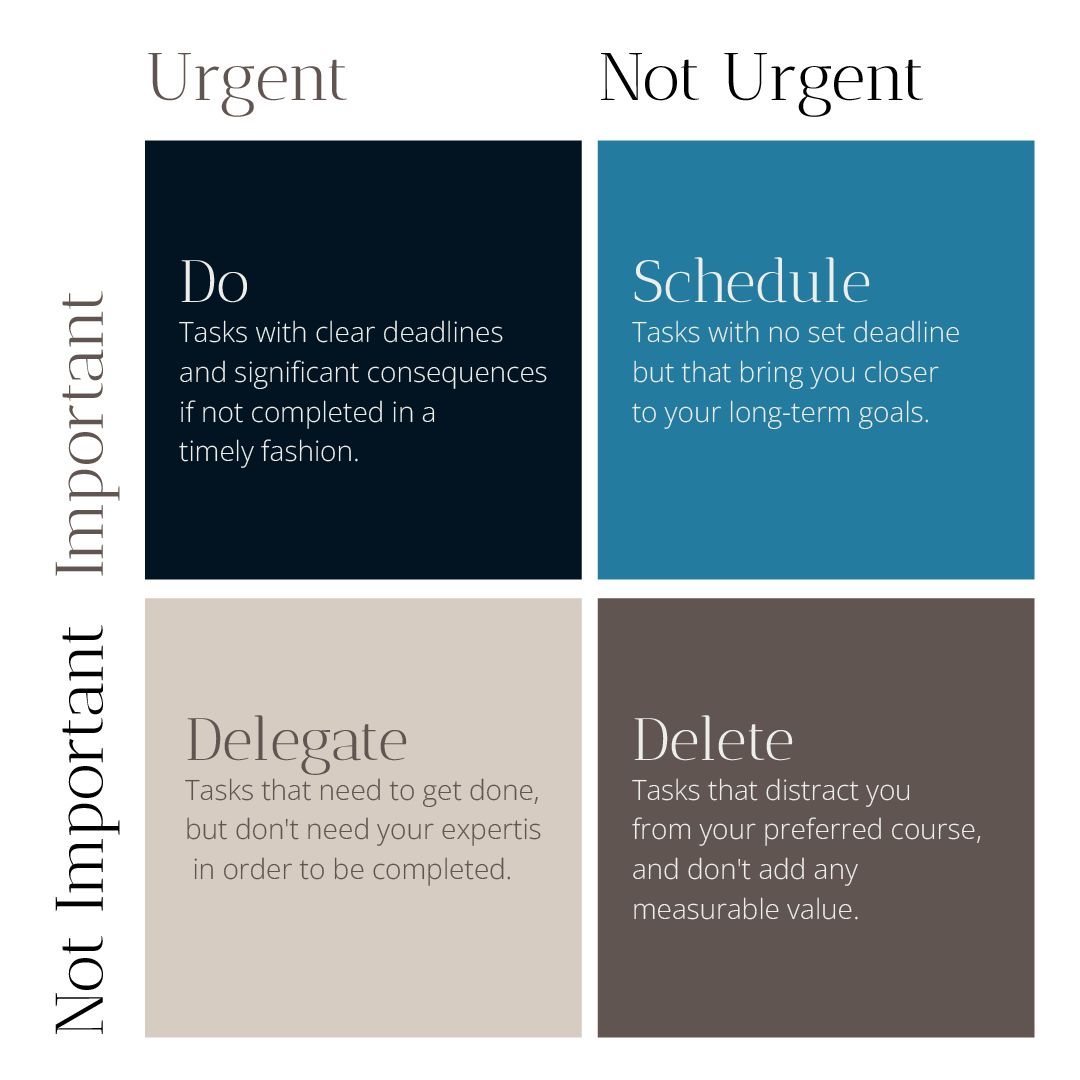In fact, while most of us feel compelled to keep lists—it’s often with sporadic habits and results.
Yet it’s generally known that by writing down your goals you are 42% more likely to achieve them than if you don’t.
Now what if you committed to a goal to set your goals? Reach your milestones through grit and determination? Achieve greatness by making excellence a habit? And living by well-thought-out to-do lists?
Write Down Your Goals: Reap the Benefits
It’s no secret that goal setting is essential if you want to achieve success. And writing down your goals is key to setting your intention to reach a certain milestone. This can be one of the most important decisions you make.
You may ask how ambitious should I be with my vision and goals. To achieve them, do I need to write them down daily, or is once with the right intention enough to let itself manifest? How many goals does it take to become too many? All important questions you need to ask.
But first, consider why writing down your goals is so important. Let’s take a look at some of the potential benefits that may come from taking the time to jot down your aspirations!
- Map Out Your Vision
Writing down your long-term vision and its goals provides clarity. It also helps put things in perspective.
Knowing exactly what it is you wish to achieve in your day, month, year and beyond makes it easier for you to break up long-term dreams into smaller, more manageable goals that are much easier to reach.
Having a plan and knowing which path will lead you there provides motivation and encouragement on your journey toward success.
- Monitor Your Progress
If you write down specific objectives with deadlines, it’s easier to track your progress over time and ensure you don’t lose sight of your end goal.
With an accurate record, you can stay focused, update your plan and adapt when faced with new challenges or changes in circumstances.
Written goals make it much simpler to stay motivated for the journey ahead.
- Become More Accountable
By writing down your goals you make yourself mindful and accountable for your actions.
It encourages us to commit fully to what we want out of life.
When facing obstacles or moments of doubt, tangible written words on paper remind us just why we set out on this journey in the first place—giving us that extra boost needed to persevere.
From Goals to Lists: Choose Your Approach. Then Stick To It
There are endless opinions on the “right” methods, structures, and techniques to optimize our goal-setting and transform them into to-do lists.
In fact, it’s not surprising that high-achievers are list-makers—within the 3% of the population that do, you will find 45% are CEOs.
Making lists is one of the most powerful tools available to help you stay organized and productive. No matter what your goal is, creating and maintaining to-do lists can be the key to success.
Here are just some of the reasons why making to-do lists is so important:
- Stay Focused
Making lists allows you to stay focused on what needs to be done. When writing down a list of achievable goals, it helps keep you motivated and focused on achieving those goals.
- Prioritize Tasks
By structuring tasks in a list, it’s easier to prioritize them from most important to least important. You can then focus on completing the most important tasks first and work your way down from there. Or using one of the methods described below.
- Track Progress
Having a written record makes it easy for you to review your progress over time. You can look back at completed items and clearly see how far you’ve come in achieving your goals.
- Save Time
Lists make it easier, quicker, and more efficient for you to get things done as they create an outline that serves as an actionable plan. This also leaves less room for mistakes or missing out on any crucial steps along the journey. As Brian Tracy, author and consultant says: “Spending 10 minutes to plan your day in advance saves up to two hours in wasted time and effort during your day.”
3 Proven Ways To Prioritize Your To-Do Lists
We’ve all been guilty of starting with that thing we’d like to do before the one that matters most. Take that approach too far, however, and that seemingly small bullet point can turn into a project that can take days, or even weeks to cross off.
Another list-building technique that we can often improve is providing a level of detail and foresight that makes your list doable. Ask most people to write down their personal list, and they’ll likely reveal something similar to “Mom”, “Shopping”, “Team Meeting” and so forth.
To get a better ROI out of your list efforts, your lists will need to have that bit of extra “oomph”.
The main reason to use to-do lists is to prioritize and track your progress. Here are several list-building strategies I’ve leaned on to get me through the day and beyond:
- Eat That Frog
In his book “Eat That Frog!: 21 Great Ways to Stop Procrastinating and Get More Done in Less Time”, Brian Tracey offers some killer points to prioritization, putting to-do lists at the center of his extensive productivity hacks.
He advocates that tackling your list should start with the task that demands the highest possible output on your mental, emotional and physical energy.
In doing so, you will spend the rest of the day knowing you’re over the hardest part. If there are two frogs, start your day by eating the ugliest one first.
- The Eisenhower Matrix
Popularized in Stephen Covey’s “The 7 Habits of Highly Effective People”, this technique first developed in the US military and government during former General and President Eisenhower’s time, helps categorize your priorities, and gives you the next steps needed to take action:

- Getting Things Done (GTD)
Developed by David Allen in his book “Getting Things Done: the art of stress-free productivity”, practices what it preaches: Break your lists into actionable steps, recognizing the more information bouncing around your head, the harder it is to take action on the first step.
Contrary to the school of thought by Covey of starting with easier tasks, Allen proposes completing the tasks that are most actionable and within your reach. Anything outside your control is for the trash.
His method is centered around 5 elements:
- Capture: Collect what has your attention
- Clarify: Process what it means
- Organize: Put it where it belongs
- Reflect: Review frequently
- Engage: Simply do

But the best list methods are the ones you like best—and actually use regularly. So long as you are improving your use of lists, you’ve got an edge over the 97% who don’t!
Psychological Benefits of List Building
So now that you’re considering how to do your to-dos, let’s go a layer deeper: the psychology of list building. Absorb at least one of these points and you will be able to shift your view from one who lives a listless life, for the better.
How to make the most out of your lists regardless of the method you choose? Start your day on paper. While there are a ton of digital to-do list apps, the benefits of handwriting vs. typing are truly night and day.
When you pen your words on paper, neural plasticity in your brain begins to trigger at a rapid speed, enabling you to make more connections. Typing might be more convenient, but in practice, it encourages verbatim notes without giving the brain nearly as much thought (whether linear or lateral) to the information.
There are boundless psychological benefits to having good to-do lists in your life. The simple act of crossing off an item has been proven to get the dopamine flowing—the neurotransmitter and hormone that, among other roles, connects us to pleasure, motivation, and the stimulation of learning.
In doing so, you can become positively addicted to list building, and by the same token, addicted to taking small steps to success.
There is a balance to achieving this. If you write down everything you do, the reward becomes trivialized. Equally, if your goal is too ambitious, you will have forgotten why it was on your list in the first place.
So how do you strike that happy medium? To quote Charles Kettering, the former vice-president of General Motors Research Corporation, “A problem well-stated is half solved”.
That may sound obvious, yet so often seemingly breakthrough ideas fall apart as we discover the plethora of problems that prevent it from being implemented.
This is particularly true in business. Employees often work under pressure and therefore race to get answers in the fear that they’ll be castigated for a slow start to getting to the solution.
Finding the right approach to define your problem doesn’t need to be overcomplicated. Toyota famously created the “five whys” technique with its innovative Kaizen method of continuous improvement. It’s as simple as it sounds: Repeat the question of why you are doing something at least 5 times until you get to the heart of the problem.
Making lists can easily become part of your daily routine if done properly. It doesn’t have to take up too much time either—just five minutes each day can mean the difference between success and failure!
So take some time every day and start making lists now if you want to reach your goals!
Getting from Ideation to Execution: Use a Planner
Envisioning your goals and making them tangible is completely intertwined with your list-building. Research has shown that by reverse engineering the steps to success help to reduce anxiety, increase confidence, and make us more likely to take meaningful action.
Goal setting becomes far more potent when hung on the idea of success rather than failure.
To help you navigate through the noise and stay consistent with your life vision, goals and lists, I’ve created the Goals Grit and Greatness Planner.
It embodies the principles stated above and consists of 5 simple, but powerful elements:
- Self Assessment
How do you feel about your wheel of life?
- Visioning
Images and photos that create an emotional desire within you
- Annual Goals
Reflect on your long-term vision and specify your annual goals
- Goal Detail
Write down your daily goals and break them down in detail into focused to-do lists
- Daily Rituals
Establish meaningful rituals that align with your goals
With this Planner you can now embark on a journey of self-discovery, personal development and realization of your true potential.








